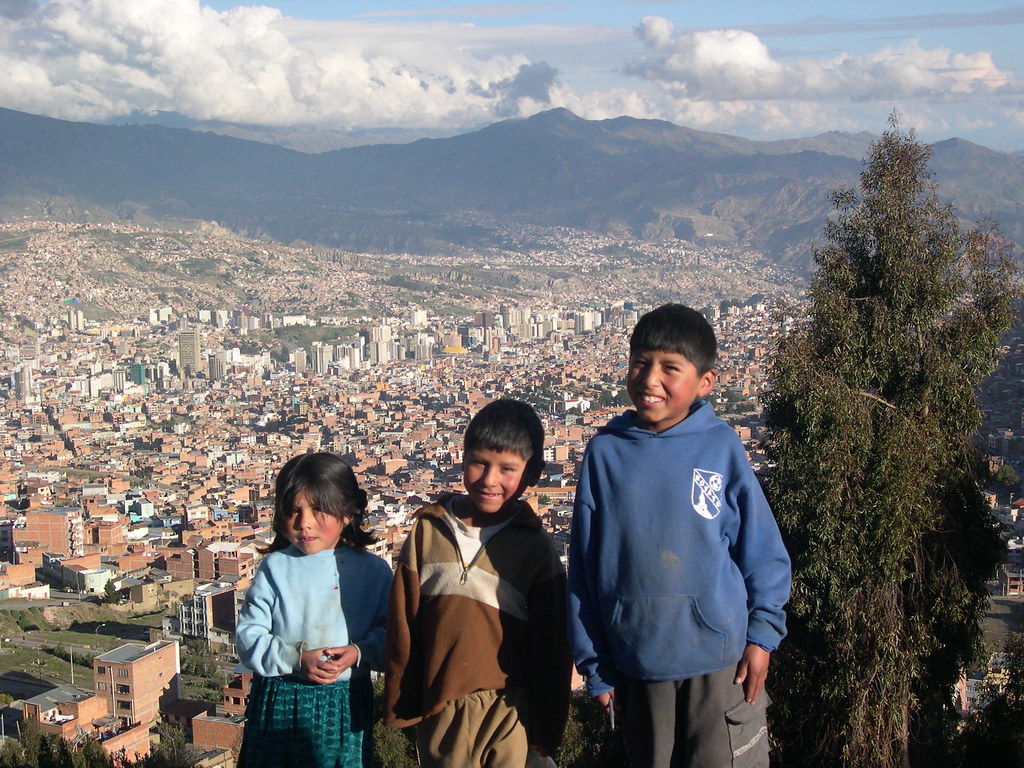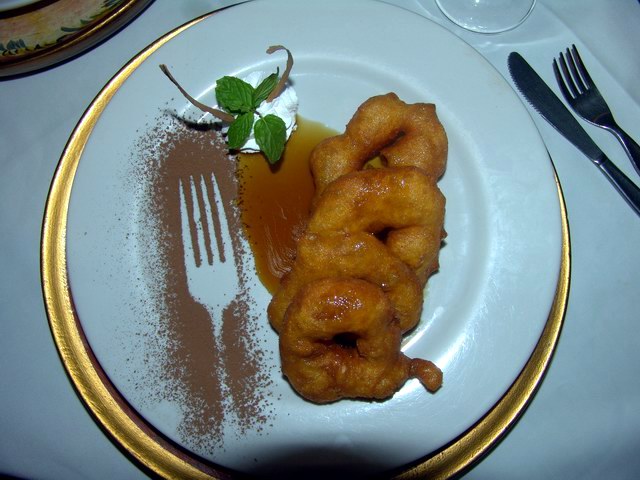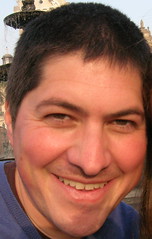4.26.2005
Esquiando en Bolivia

Chacaltaya ski lodge, 17,785 feet. Photo by Harvey W. Reed
Chacaltaya ranks number one in several ways. It is the world's highest lift-served ski area, and the only ski area in Bolivia. The rope tow there was the first constructed in South America. The tow was built using an old car engine, and many who have been there say it is the world's fastest and most difficult to ride drag lift.
The base is reached by a remarkable road, heroically built in the 1930s by the Bolivians up to the closest snow field to La Paz, their capital. The guy in charge died in an avalanche in 1945 which the locals believe was an act of vengence by the snow gods and is given as the reason why there have been no new ski areas developed in Bolivia since.
Chacaltaya is famous for being the closest ski area to the equator and for having the oldest and fastest lift in South America. Other record claims include being the oldest and most northerly South American ski lift and the only one outside Argentina and Chile. It operates only on weekends during the South American summer (November to March). At an elevation of over 17,000 feet, it is too cold to operate during the South American winter.
The members of the Club Andino Boliviano developed the area, and the club is still going strong today. Bring your own oxygen tank.
Chacaltaya vital stats
- Vertical drop: 200m/655 ft.
- Top elevation: 5,422m/17,785 ft.
- Lifts: 1 rope tow
La Paz: a city with altitude

Children posing above their home, overlooking downtown La Paz. Photo by Scott Henderson.
At a height that puts the Mile-High City to shame, La Paz, Bolivia, is perched at 12,000 feet, making it the loftiest capital city in the world.
At these altitudes, the difference of a few hundred feet can make all the difference. The lower you go in the La Paz Valley, the more oxygen and the warmer the temps. Consequently (and somewhat ironically) the cheapest real estate is up in the hills, 1,000 or more feet above the city. There, the view is grand, but the winds and cold are formidable. The folks with money tend to huddle on the valley floor where they have a constant view of the poor neighborhoods in the hills. Poetic, isn't it?
Interestingly, the city's full name is La Paz de Ayacucho, a reference to the 1824 victory at the Battle of Ayacucho (Peru), which resulted in Bolivia's independence from Spain.
4.25.2005
Sights and sounds

Vernazza, Italy. Photo by Dante Vono
Dante Vono has returned from a trip to Italy, where he not only took digital photos, but made field recordings in full stereo. It's a great idea -- you get to see and hear the enchantments of St. Peter's Basilica, the streets of Rome or the seaside town of Vernazza.
Listen to the bells of Vernazza (tower in lower right of picture).
Go to Dante's Flickr page to see and hear more!
Technorati Tags:
Italy, Vernazza, field recording
4.21.2005
Galería de cocina peruana: Picarones

Picarones in syrup. Photo by Jackson Lee.
Who can resist a good doughnut? Even though Dunkin' Donuts has won fans in Lima, picarones are lo más auténticos. Made from pumpkin flour, with a hint of clove and cinnamon in the batter, picarones are served hot, swimming in a pool of light molasses syrup.
Picarones are popularly served at open-air anticucho stands, which ring the parking lots of soccer stadiums in the city. It's tailgating, Lima style. Folks come for the anticuchos (spicy kebabs made of beef heart) and corn on the cob and then finish off the meal with picarones.
You can buy boxes of Picarones batter mix (with packets of syrup!) at Peruvian grocery stores. I just used up my last box to make a batch for my kids, so it's time to get some more!
4.20.2005
Lovely nightshades

Solanum maternum Bohs. Photo courtesy of Michael Nee, Flora of Parque Nacional Amboro
As long as we're on the topic of lost crops of the Incas (or any pre-Colombian peoples for that matter), it's amazing to note the tremendous contribution that has been made by the Nightshade family (genus Solanum). It's a big family, with some 90 genera and 2,600 species, and it has spawned some serious overacheivers like potatoes, tomatoes, peppers, eggplants, sweet potatoes, petunias, morning glories and tobacco.
Since their "discovery" in the 1500s, these plants have pretty much changed the way people around the world eat, garden and smoke. I sometimes wonder: What were Thai curries were like before the chile pepper was brought over from the Americas? What did southern Italians put on their pasta? What did the French fry?
Loco for lucuma

Lucuma is a strange fruit, native to the highlands of Colombia, Ecuador and Peru. Just one of the many so-called lost crops of the Incas, it makes the most wonderful ice cream. For this author, securing an obscenely large bowl of lucuma ice cream is always a top priority upon arrival in Lima.
4.17.2005
Mega-growth

La Avenida Nicolás de Piérola. Photo courtesy of Arquandina.com.
When my dear Abuelita Cármen was born in Lima in 1905 or 1906 (nobody's quite sure when), the city had about 100,000 inhabitants.

San Isidro, a bustling and wealthy suburb of Lima.
In a mere 100 years, the city has grown to more than 7 million and would be utterly unrecognizable by a visitor from the past.
Wards of the state
Have a Coke and a smile
4.10.2005
Voodoo: a Legitimate Religion?

Voodoo commercialized: A Voodoo curio shop in New Orleans. Photo by Don Ball.
"Voodoo is widely regarded as a mysterious and sinister practice that's taboo in many cultures. The mere word conjures images of bloody animal sacrifices, evil zombies, dolls stuck with pins, and dancers gyrating through the hot night to the rhythm of drums.
But experts on voodoo beliefs say there are many misconceptions about the practice, which is performed in various forms worldwide.
'Voodoo is not some kind of dark mystical force, it is simply a legitimate religion,' says anthropologist Wade Davis, a National Geographic Explorer-in-Residence who has studied voodoo extensively in the Caribbean nation of Haiti.
Once banned, voodoo is now an official religion in Benin, with about four million adherents in that nation alone. Forms of voodoo are also practiced in other African nations, the Caribbean, South America, New Orleans, and elsewhere."
Read the full article at National Geographic.
4.09.2005
Paul Gauguin, the beast


Left: Paul Gauguin, "Self Portrait in Stoneware", 1889. Right: Moche portrait vessel, North coast of Peru, 400 - 600 CE
So much attention is paid to the paintings of Paul Gauguin that only rarely do you find reference to his ceramics. Perhaps they're not considered all that important -- I just don't know. But it's his portrait vessels that give the strongest hint of the artist's Peruvian roots. He spent much of his childhood in Lima and his grandmother was the well known feminist activist Flora Tristán. Gauguin's heritage figured centrally in the myth he formed about himself. He wrote about the savage within him, alluding to the possibility that he had indigenous blood running through his veins. Never mind that his Peruvian great grandfather (and Tristán's father), Marino Tristán y Moscoso, was no Indian, but a wealthy aristocrat from Arequipa.
Mario Vargas Llosa's historical novel This Way to Paradise explores the parallels between the life of Flora Tristán and her grandson. (It's on my shelf with about 20 really enticing books, so don't expect a book report on this site for a long time.)
4.07.2005
The northernmost city in Latin America?

Back from a quick jaunt to New Orleans, which made me wonder: how would things be today if Louisiana had stayed in Spanish hands? Would it be another state of México? Part of a Spanish-speaking República de Tejas? Regardless of what could have been, for this first-time visitor, New Orleans was instantly familiar. With the heavy imprint of colonial, slave and Creole cultures (and with a notable absence of the puritanical hangover we suffer from in the North), the Crescent City really should be considered part of Latin America.






